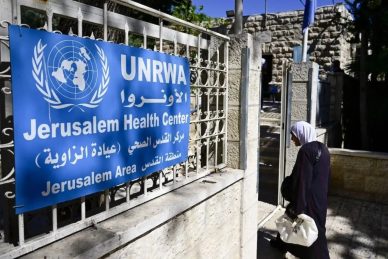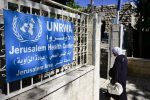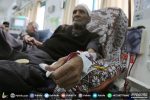Recently the proposal of making Abu Dis the capital of the Palestinian state instead of Jerusalem was mentioned in the media in the context of what is described as political movements taking place in the region to achieve progress in the so-called peace process under the sponsorship of the American administration.
The town of Abu Dis is located to the east of occupied Jerusalem and is separated from the city by the Apartheid Wall. Its western borders are only two kilometers away from Al-Aqsa Mosque.
Lawyer Bassam Bahar the head of the Land Defense and Settlement Committee in occupied East Jerusalem told the PIC reporter that the total area of the town of Abu Dis is about 32000 dunums and that construction is only permitted in 500 dunums by the local government committee and the Israeli Civil Administration while the rest of the land were cut off in favor of the settlements of Kedar and Ma’aleh Adumim and the Apartheid Wall which had cut off a large portion of the land belonging to the residents of the town.
He pointed out that the population of Abu Dis today is about 15000 while their number increases to 25000 after adding the students of Al-Quds University many of whom live in the town explaining that the borders of the town of Abu Dis extends to the outskirts of the Dead Sea.
Bahar said that the large Israeli settlement project known as ‘Jerusalem 2020’ cut off large areas of the town’s land from the east to serve the Israeli settlements including the ‘E1 project’ the Ring Road and the relocation project of Bedouins near the town of Abu Dis indicating that these settler projects would affect the residents of the town and isolate them in the future.
Isolating the town
He pointed out that the Israeli occupation authorities intend to build another wall to the east of the town to isolate it in addition to a plan to deport the Bedouin population of five thousand people which will create population social economic and health problems.
Bahar pointed out that the town of Abu Dis was mainly connected to the city of Jerusalem and was a neighborhood of the holy city. The town is only five minutes away from the holy city by bus and is closer to Jerusalem and Al-Aqsa Mosque than the neighborhoods of Shu’fat and Beit Hanina.
Jerusalem was the lifeline for the residents of Abu Dis. The residents of the town relied on Jerusalem economically and socially as well as in the health and educational sectors. They used to be treated in Jerusalem hospitals while students used to attend the schools of the holy city. Vendors used to come from Abu Dis to display their goods in Jerusalem markets.
Bahar noted that following the construction of the Separation Wall the town of Abu Dis and its neighboring areas suffered from a shortage in health services which has affected many some of whom died.
Regarding connections with the West Bank Bahar says there was no contact with the West Bank towns and villages due to the occupation’s checkpoints that make it difficult for the residents of the town to access the West Bank. Yet despite the Wall the residents try to communicate with Jerusalem in many different ways he underlined.















